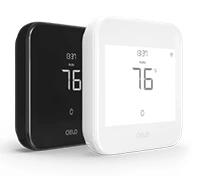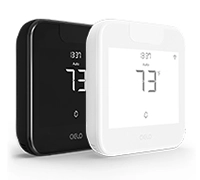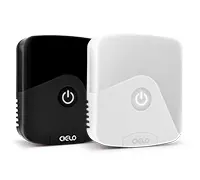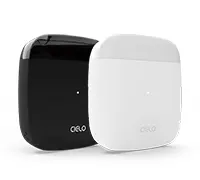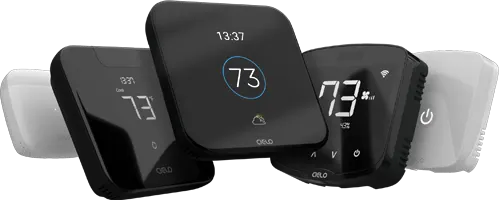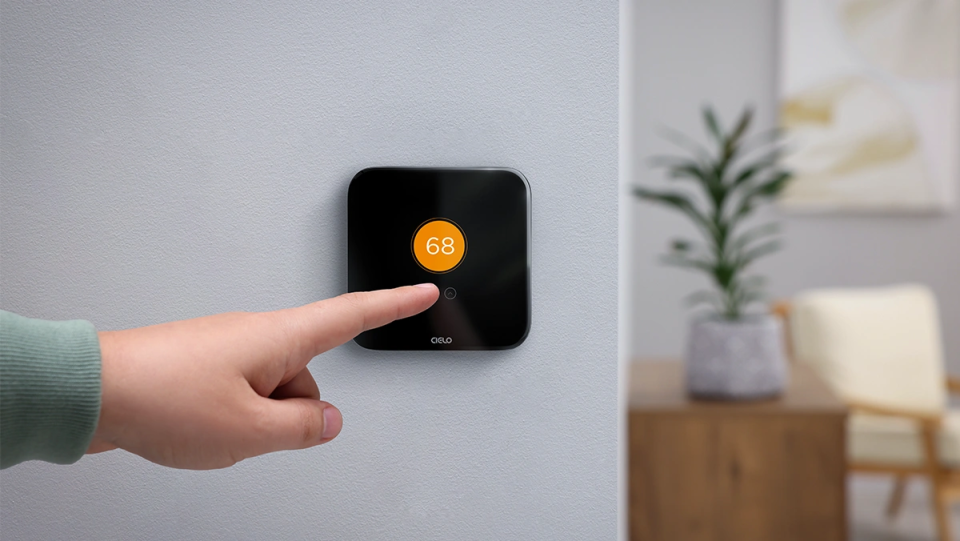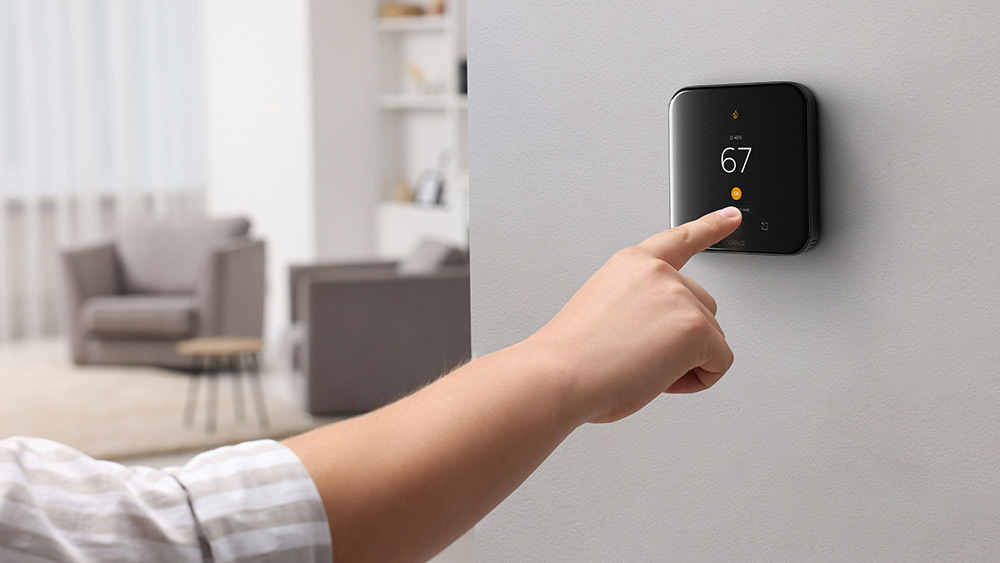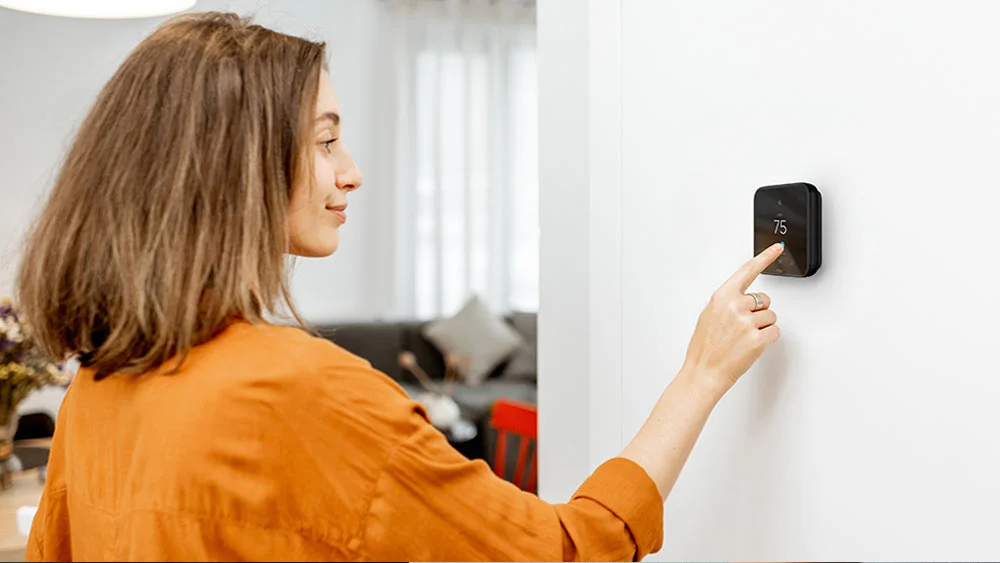
Key Takeaways
- With smart thermostats, you can control your home environment from anywhere using your phone.
- Smart thermostats offer features like scheduling and geofencing to optimize your home climate and reduce energy bills.
- They can make automatic adjustments, unlike traditional thermostats that require manual input.
Smart thermostats have changed the way you manage your home climate. No more fiddling with the buttons or hoping you remembered to turn off your HVAC unit before heading out. With a smart thermostat, you get a complete package of convenience, efficiency, and energy savings.
This blog will explore what a smart thermostat actually is, how it helps to save energy, and the top features that make it one of the smartest home upgrades you can invest in.
What Is a Smart Thermostat & How Does It Work?
A smart thermostat is a Wi-Fi-enabled thermostat that connects your HVAC system to the internet, allowing you to control your heating/cooling using your phone. With just a few taps on your phone, you can control your home climate from anywhere in the world. As a smart thermostat communicates wirelessly, you will require a stable internet connection in order for it to function properly.
When you send a command using your phone, it goes through your Wi-Fi network to reach the thermostat. It then sends the signal to your HVAC system to make adjustments. Smart thermostats use built-in sensors to keep track of your home climate. These sensors are always monitoring your environment and sending live data to the thermostat, which uses that information to maintain your desired temperature.
Related: How Do Smart Thermostats Work & Other Frequently Asked Questions
Key Features of a Smart Thermostat
By integrating these features, smart thermostats offer a seamless and intelligent way to control your home environment while optimizing energy usage.
-
Global Control
Whether you’re heading home earlier than expected and want the house to be cozy when you arrive, or you forgot to turn off the AC before going out, a global control feature can come in real handy. It allows you to make adjustments anytime using your phone.
Equip your HVAC system with smart features and achieve the perfect balance between comfort & savings.
Learn more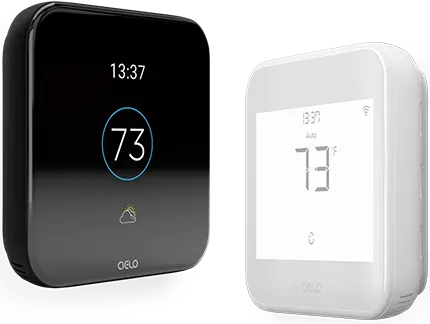
-
Energy Usage Tracking
Smart thermostats offer detailed energy reports that help you better understand your energy usage patterns. This can help you make informed decisions and save money on bills.
-
Location-Based Controls
Geofencing or location-based controls adjust your temperature based on when you leave the house or arrive home. When you leave, the smart thermostat switches to energy-saving settings, and when you return, it reverts to your preferred comfort temperature.
Some smart thermostats have motion sensors, also known as occupancy sensors, which detect whether a home is occupied or empty and adjust the temperature accordingly.
-
Learning Capabilities
Some advanced smart thermostats have the learning capability. Over time, with use, they can learn your preferences and schedules, automatically making adjustments to suit your routine.
-
Integration with Smart Home Systems
They can integrate with other smart home devices, such as voice assistants (e.g., Amazon Alexa, Google Assistant), to control your unit using voice commands. You can also connect them with smart lights, security systems, and more.
How Are Traditional Thermostats Different from Smart Thermostats?
A standard thermostat only offers basic controls. You set your preferred temperature, and it simply turns your HVAC system on or off to maintain that temperature.
You can only control it manually using buttons or a dial, depending on the model. There’s no way to check the temperature in your home and make changes if you are out and about. If you forget to turn off your system before leaving home, it can result in a noticeable increase in your energy bill. Simply put, it lacks the convenience and efficiency that modern smart thermostats offer.
How Can Smart Thermostats Cut Energy Costs?
Smart thermostats are designed to optimize energy use by adjusting heating and cooling based on your specific needs. One way they do it is through the scheduling feature. You can set a customized schedule based on your daily routine, so your HVAC system only runs when needed. For example, you can set back your thermostat while you’re asleep or away from home, reducing unnecessary energy use. According to the Department of Energy, you can save up to 10% on your bills by simply setting your thermostat back by 7F to 8F for 8 hours a day.
Another way smart thermostats save energy is through location-based controls or geo-fencing. When the thermostat senses that your house is empty, it switches to an energy-saving mode, adjusting the temperature (raising it in the summer or lowering it in the winter).
These smart devices also track your energy usage. You can monitor how often you’re heating or cooling system runs and use that data to make informed decisions to conserve energy and lower costs.
Some models even connect with programs that allow your energy provider to adjust your thermostat settings during peak hours in exchange for discounts. And if you live in an area with time-of-use electricity rates, certain smart thermostats can help you save even more. For instance, if electricity prices spike at 5 pm, your thermostat can heat/cool your home beforehand and then ease off during peak pricing, keeping you comfortable while avoiding higher rates.
Conclusion
Unlike traditional thermostats that offer only basic controls, smart thermostats offer automation, remote access, and even learning capabilities. With features like geofencing, energy tracking, and smart home integration, they are a blend of comfort, convenience, and energy efficiency.
While the upfront cost may be higher, the long-term benefits make smart thermostats a worthwhile investment for anyone to modernize their space and lower their environmental impact.
Frequently Asked Questions
Will a Smart Thermostat Work If Internet Goes Down?
An internet connection is necessary for remote control via the app and accessing advanced features. In case your internet goes down, you can make manual adjustments directly from the smart thermostat. However, you may have limited functionality depending on your specific model.
Do You Need a C-Wire to Install a Smart Thermostat?
Smart thermostats need continuous power for their advanced features to work, which usually comes from a C-wire (common wire). However, many old homes lack a C-wire. In this case, you can opt for a C-wire adapter as it provides a dedicated power source to your thermostat.
